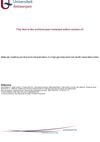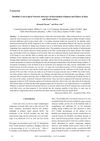Search
for
Did you mean Protein Structure?
Learn
5 / 27 resultslearn Osteopontin
signaling protein that, when suppressed, may grow hair by reducing inflammation and stem cell loss
learn Stem Cell Factor
learn Biotin
supplement to help with hair texture and quality
learn Epidermal Growth Factor
Research
5 / 1000+ results
research Molecular Modeling and Structural Characterization of a High Glycine–Tyrosine Hair Keratin Associated Protein
The 3D structure of a key hair protein was modeled, revealing specific helical structures and stabilization features.
research Female Cadaver in the Han Tomb No. 1: X-Ray Diffraction Studies on Two Kinds of Fibrous Protein
The protein structures in the hair and tendon were preserved, but their molecular arrangements changed.

research Raman Microspectroscopy of Hair Cuticle With Polarized Excitation: Problem of Protein Secondary and Tertiary Structure
Polarized Raman spectra can reveal changes in hair keratin's protein structures.
research Attenuated Total Reflection Fourier Transform Infrared Spectroscopy Analysis of Human Hair Fiber Structure
Human hair has different protein structures in its cuticle and cortex.

research Disulfide Cross-Linked Network Structure of Intermediate Filament and Matrix in Hair and Wool Cortices
Hair and wool strength is affected by the number and type of bonds in their protein structures, with hair having more protein aggregates than wool.
Community Join
5 / 743 resultscommunity The truth about Dutasteride (w/ sources)
The effectiveness of Dutasteride compared to Finasteride in treating hair loss, with evidence given such as studies and experiences, as well as discussion around whether one should switch from Finasteride to Dutasteride. There is also a discussion on post-Dutasteride syndrome.
community Verteporfin and Microneedling
Clinical studies by Dr. Barghouthi and Dr. Bloxham indicate that Verteporfin, when used with FUE and FUT hair transplantation methods, shows promise in hair follicle regeneration and minimal scarring due to its ability to inhibit Yes-associated protein (YAP). Microneedling at depths of 3-3.5mm, combined with Verteporfin, could potentially reactivate dormant follicles, although the optimal dosage and application method are still under investigation. Concerns remain about the DHT sensitivity of regenerated follicles, highlighting the need for further research to optimize trauma levels and Verteporfin concentrations to achieve effective and scar-free hair regeneration.
community What About Phytosterol Alternatives - Rice Bran Oil - Natural DHT Blockers
The conversation discusses natural DHT blockers like rice bran oil, which may reduce 5α-reductase activity similarly to Minoxidil and Dutasteride. One user argues that finasteride is more reliable and effective than natural alternatives.
community We should actually be hopeful for these recent new developments
AI advancements, like AlphaFold, are speeding up drug discovery for hair loss, promising more effective treatments. Current options like minoxidil and finasteride have limitations, but new developments could improve solutions in 5-10 years.
community Don't use PP405 from everychem. it is likely fake.
PP405 from Everychem is likely fake and potentially harmful, with concerns about its stability and the risk of using the wrong MPC inhibitor, which could damage hair follicles. The real PP405 was studied under strict conditions, and DIY attempts are discouraged due to unknown formulation and quality control.